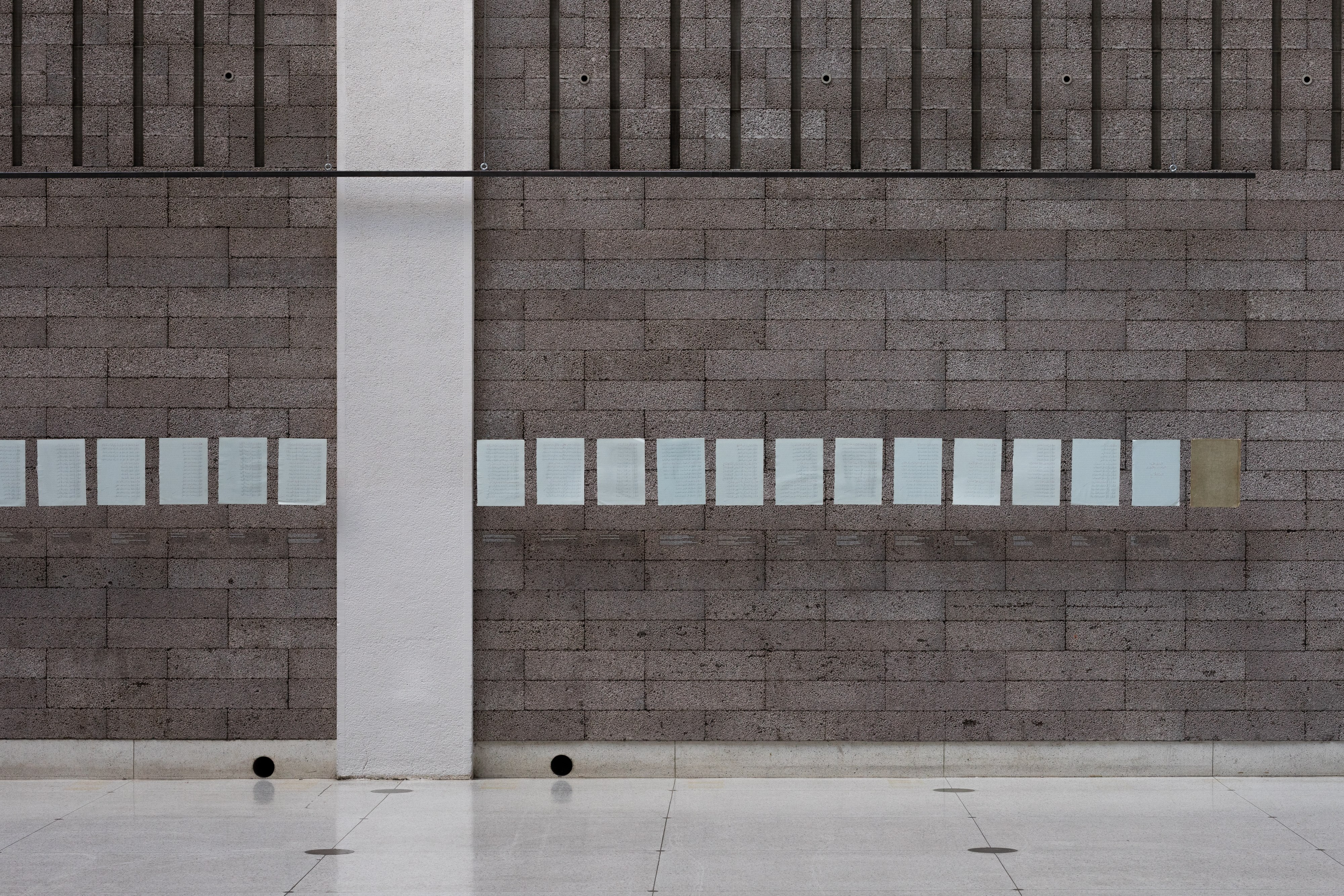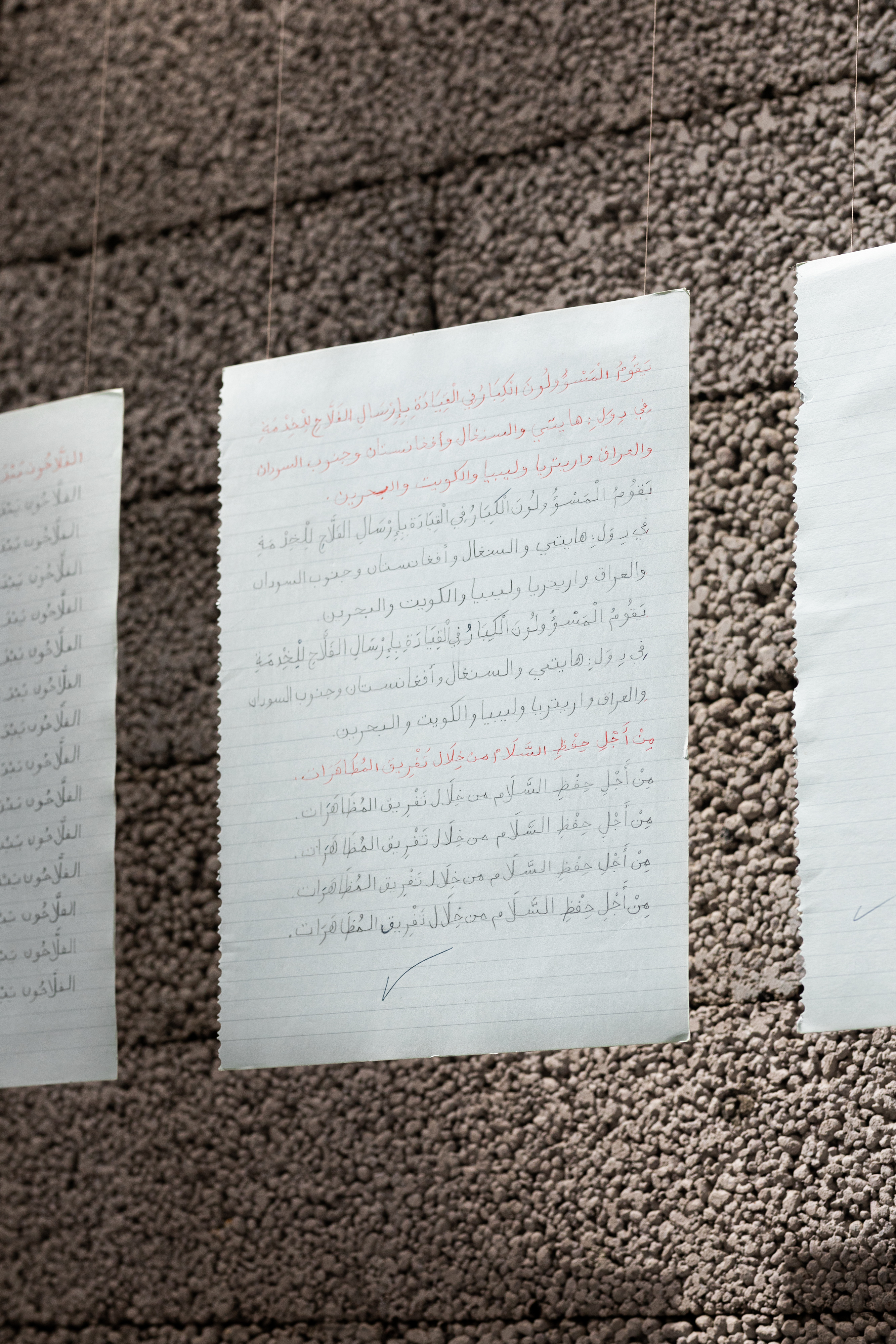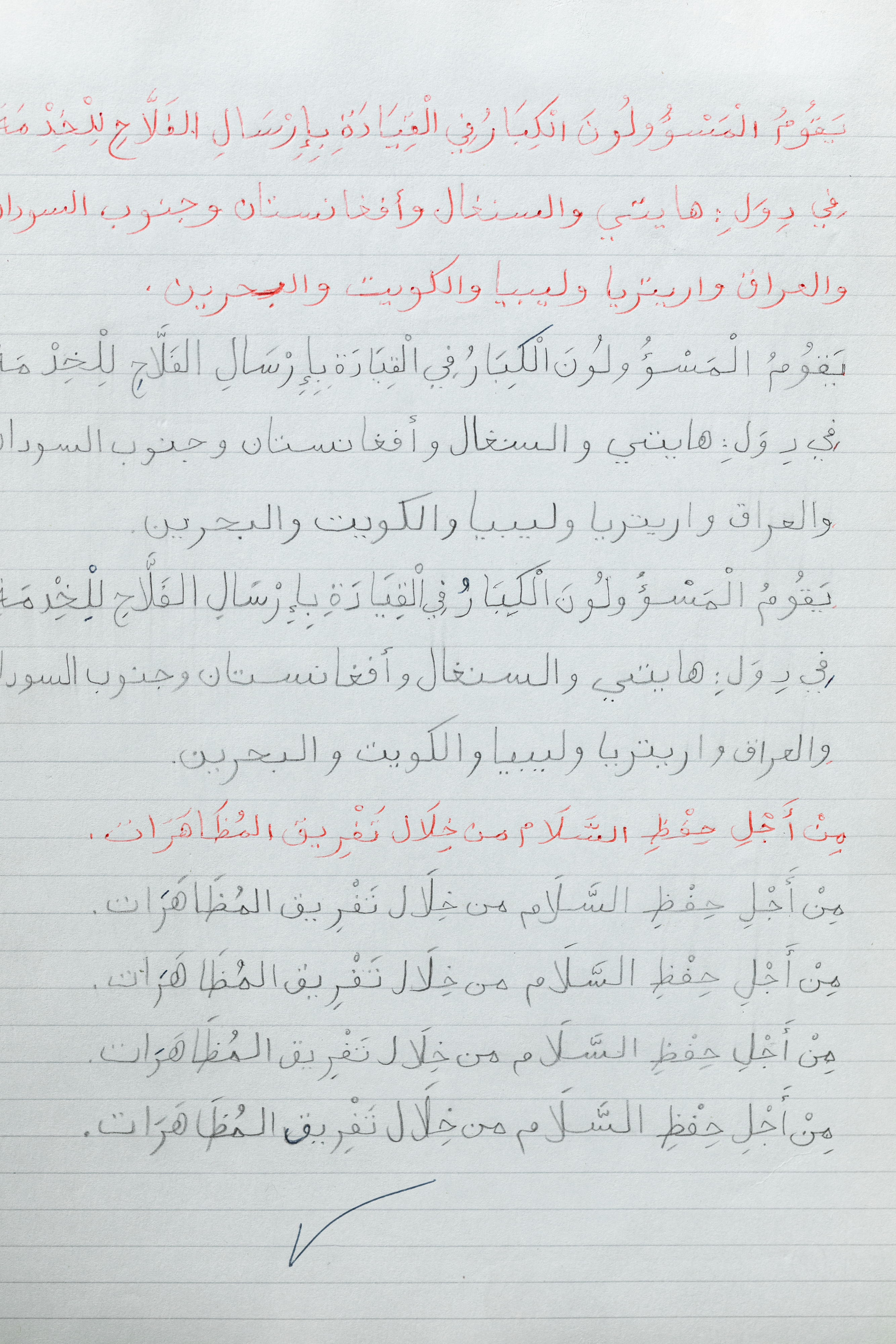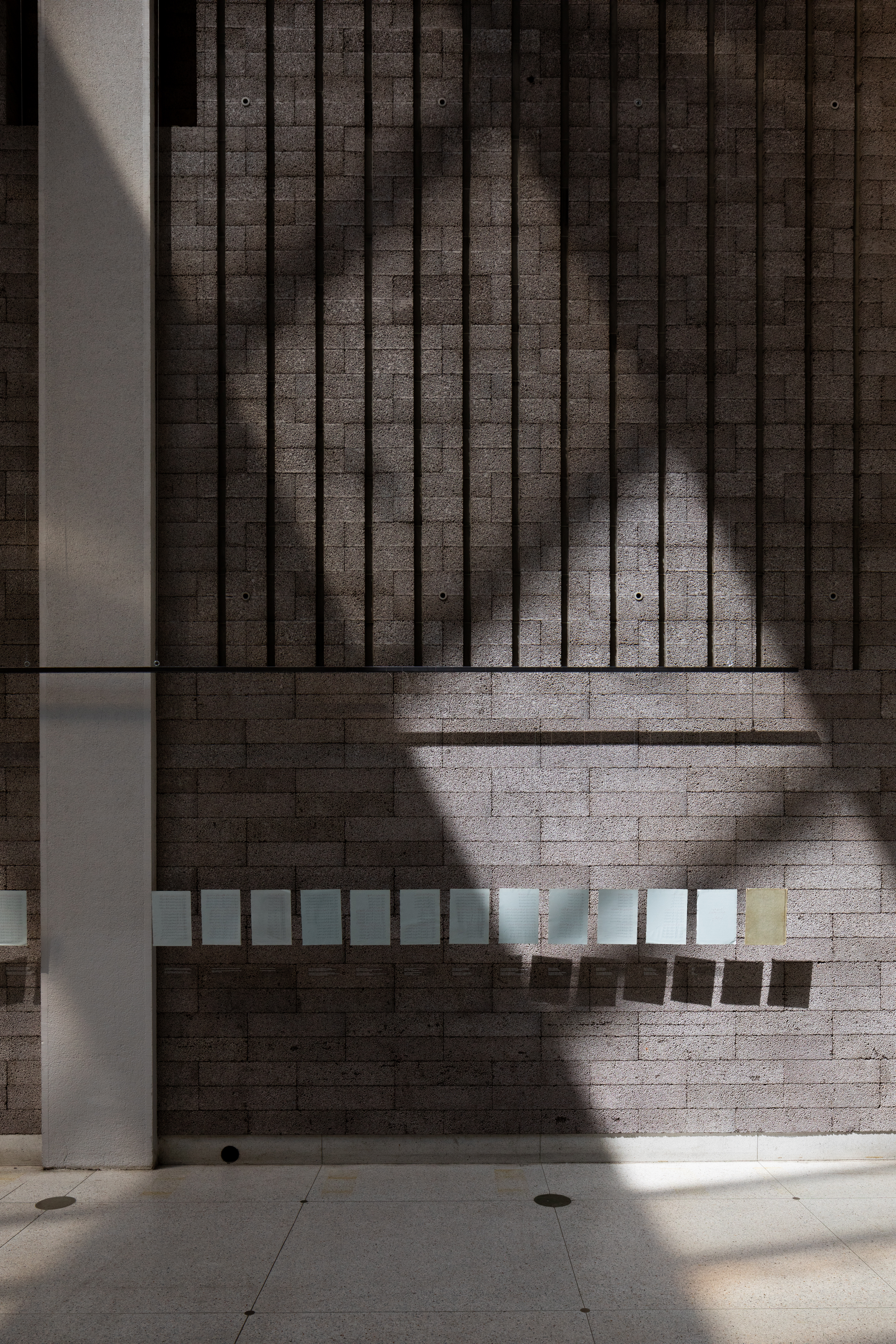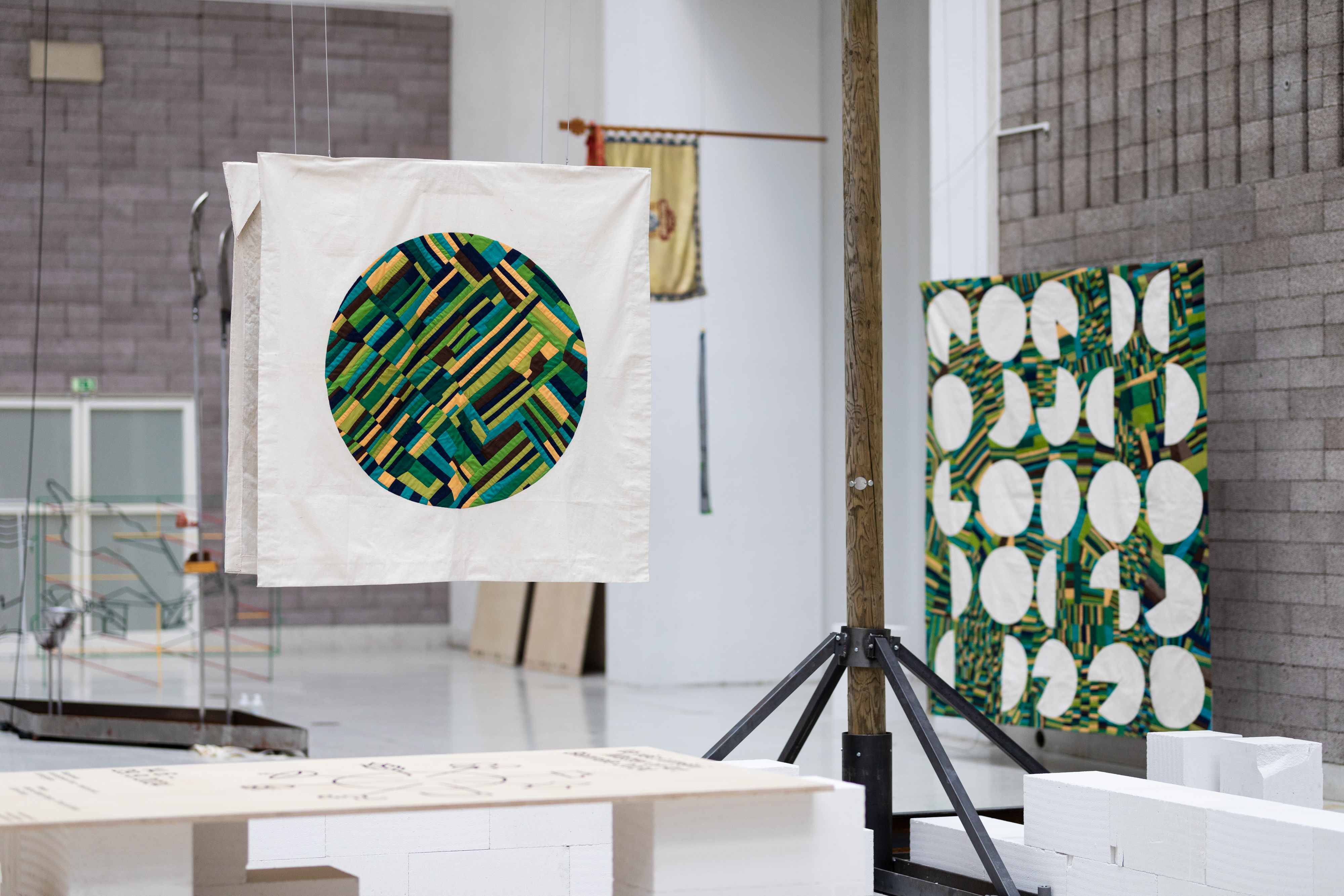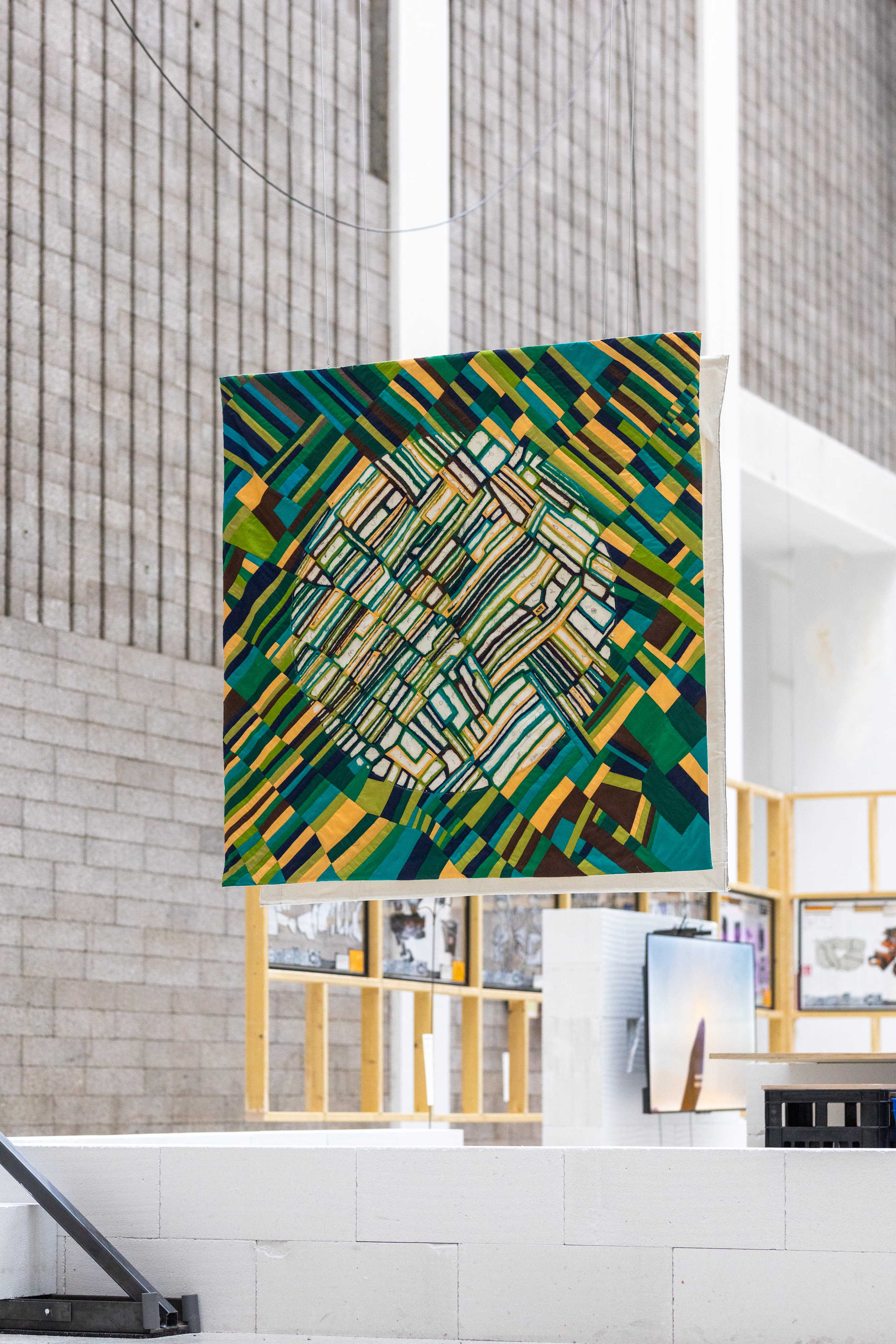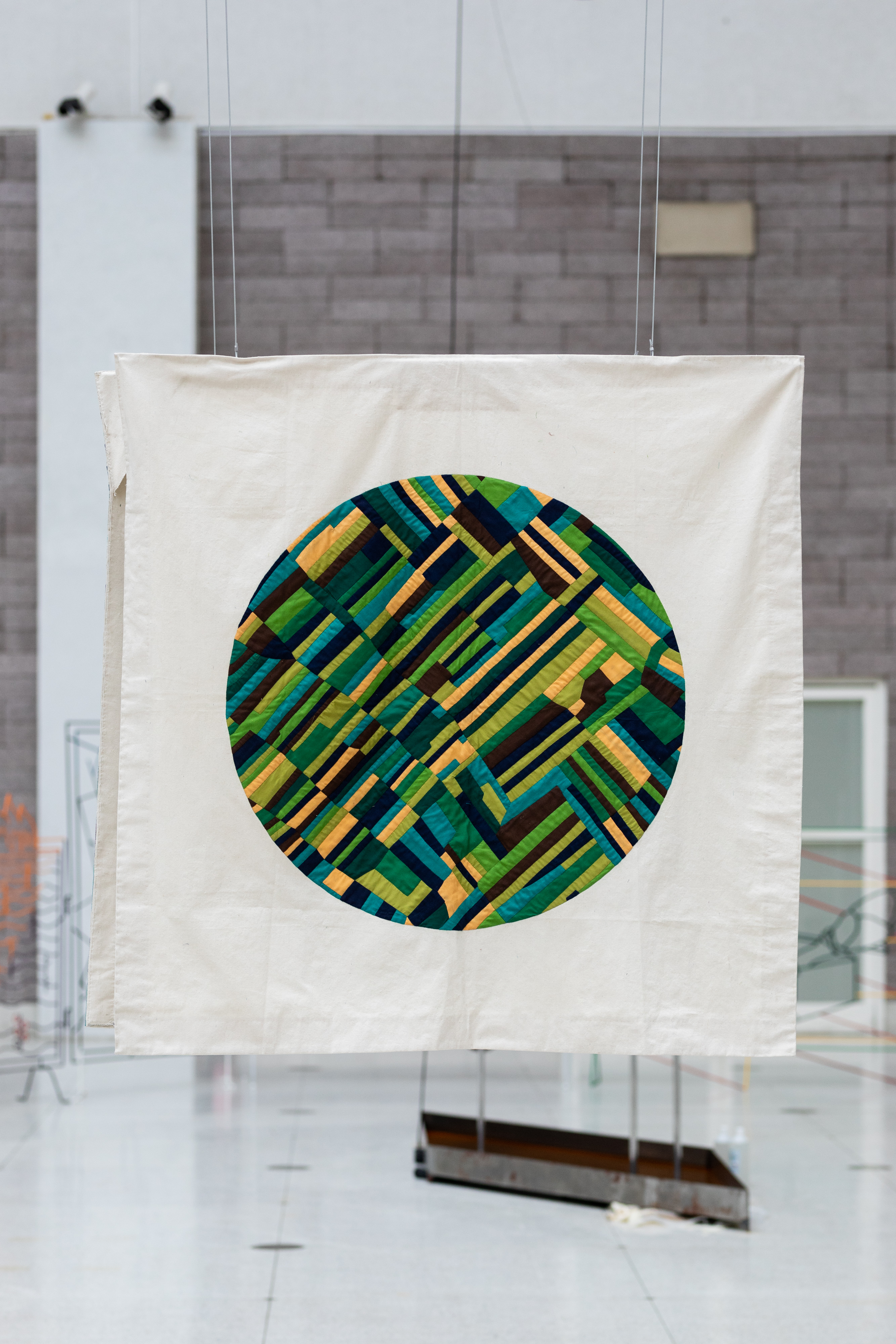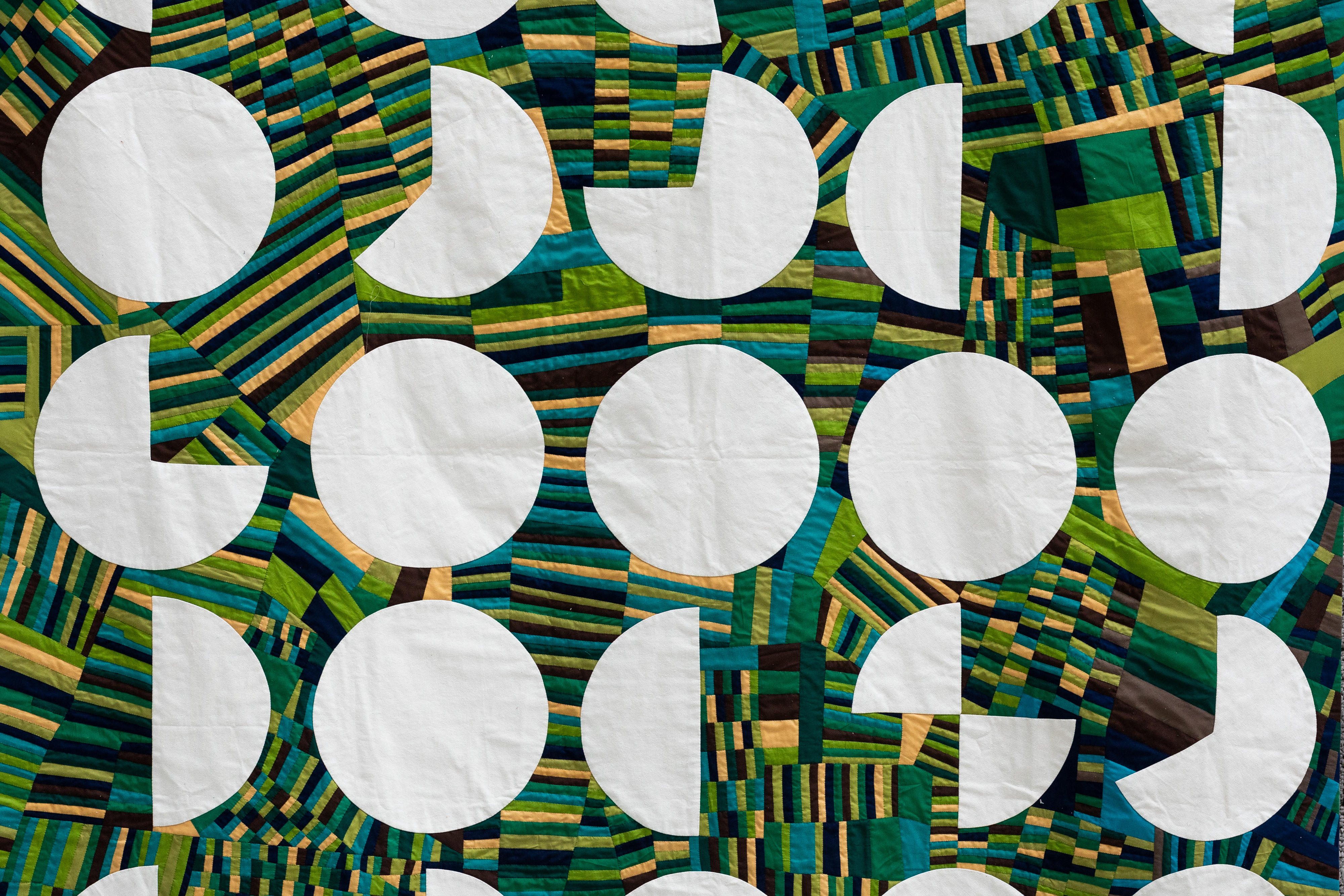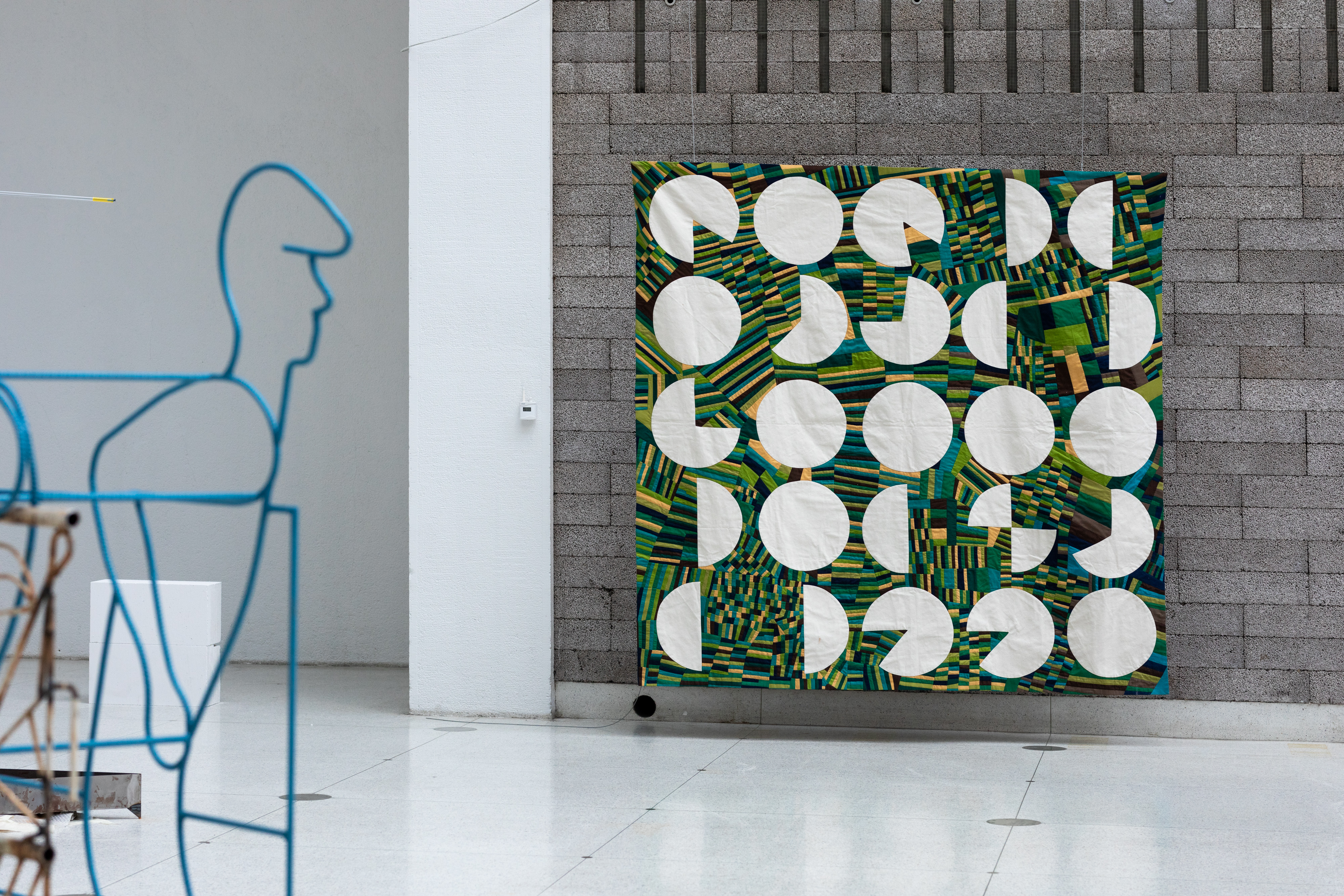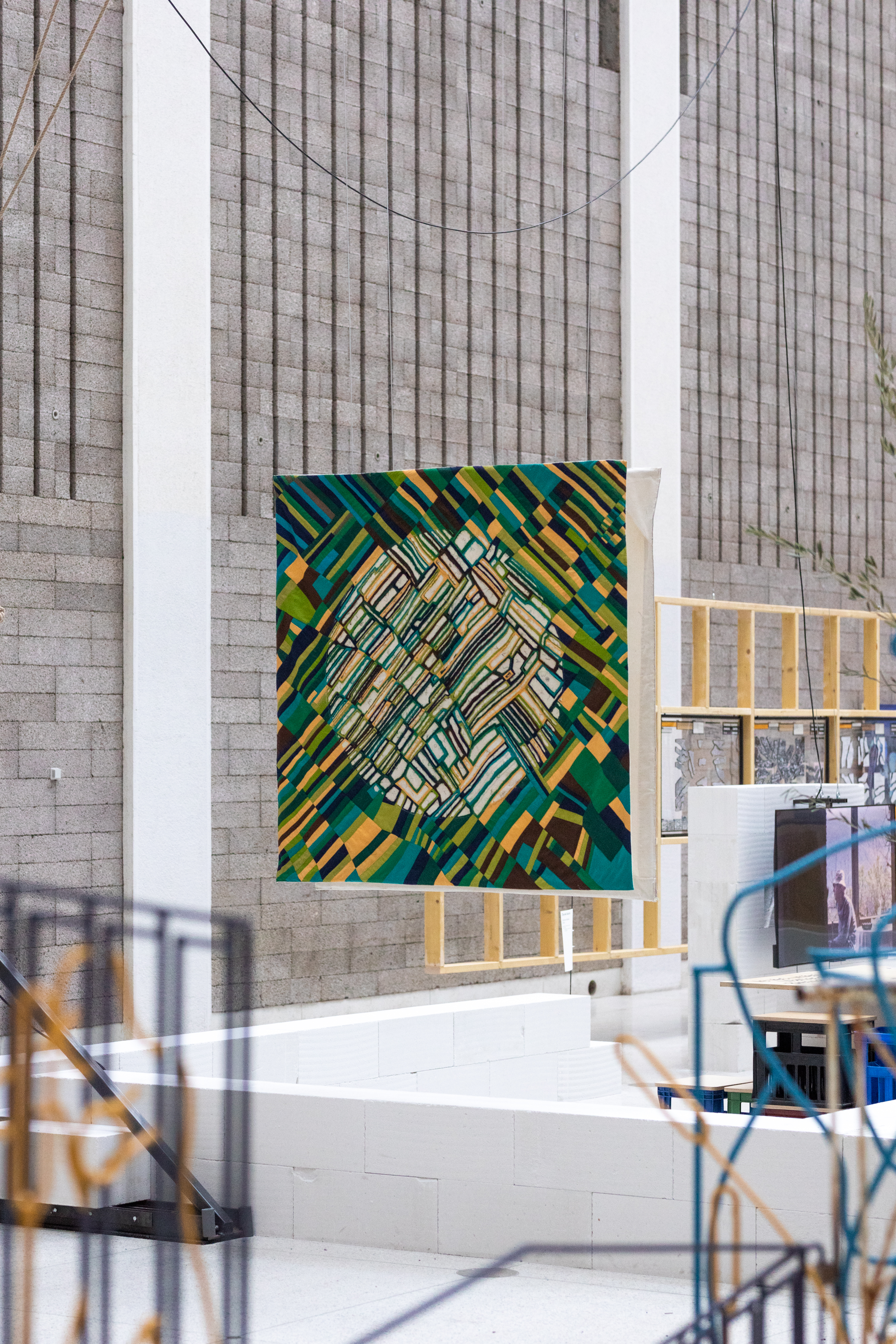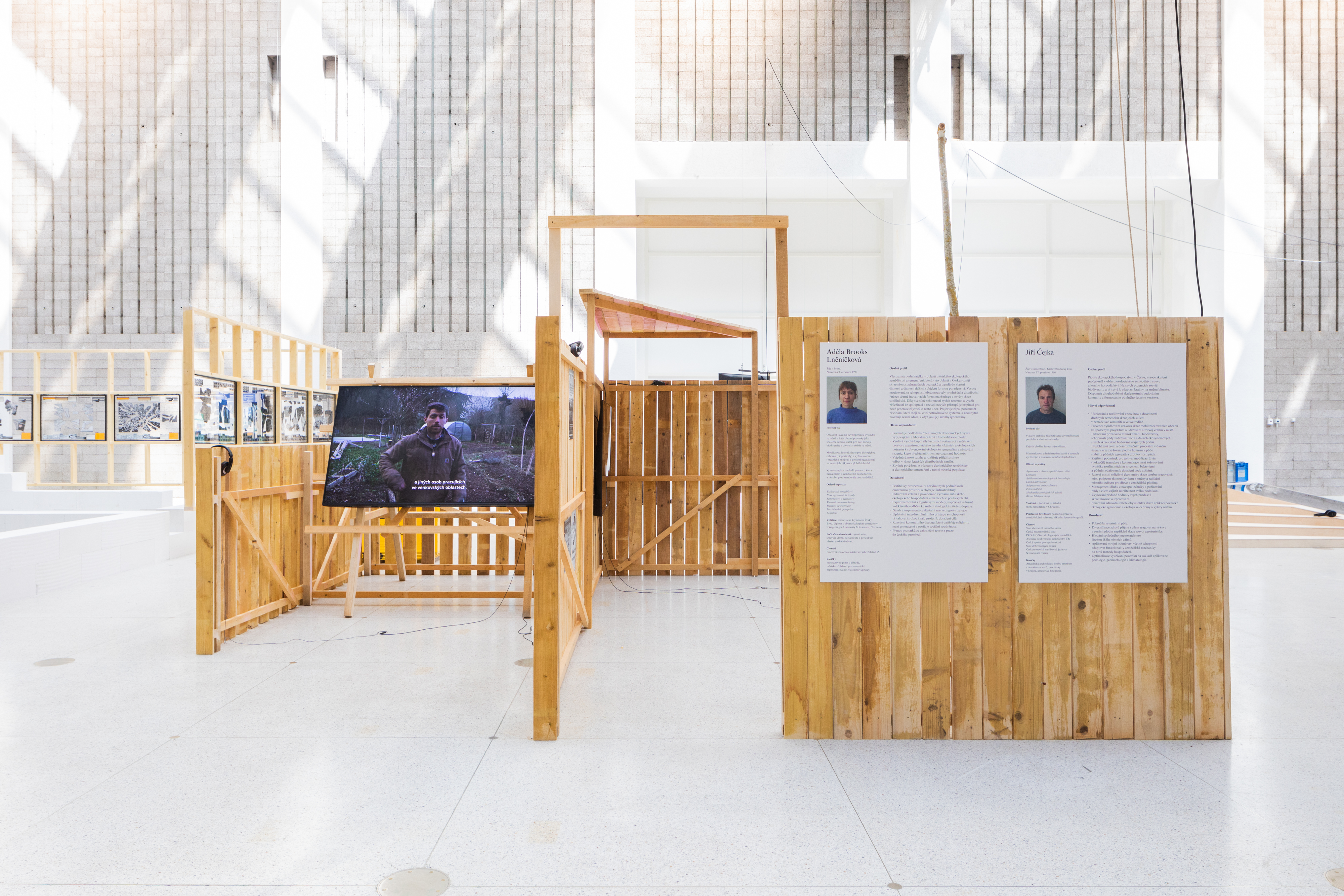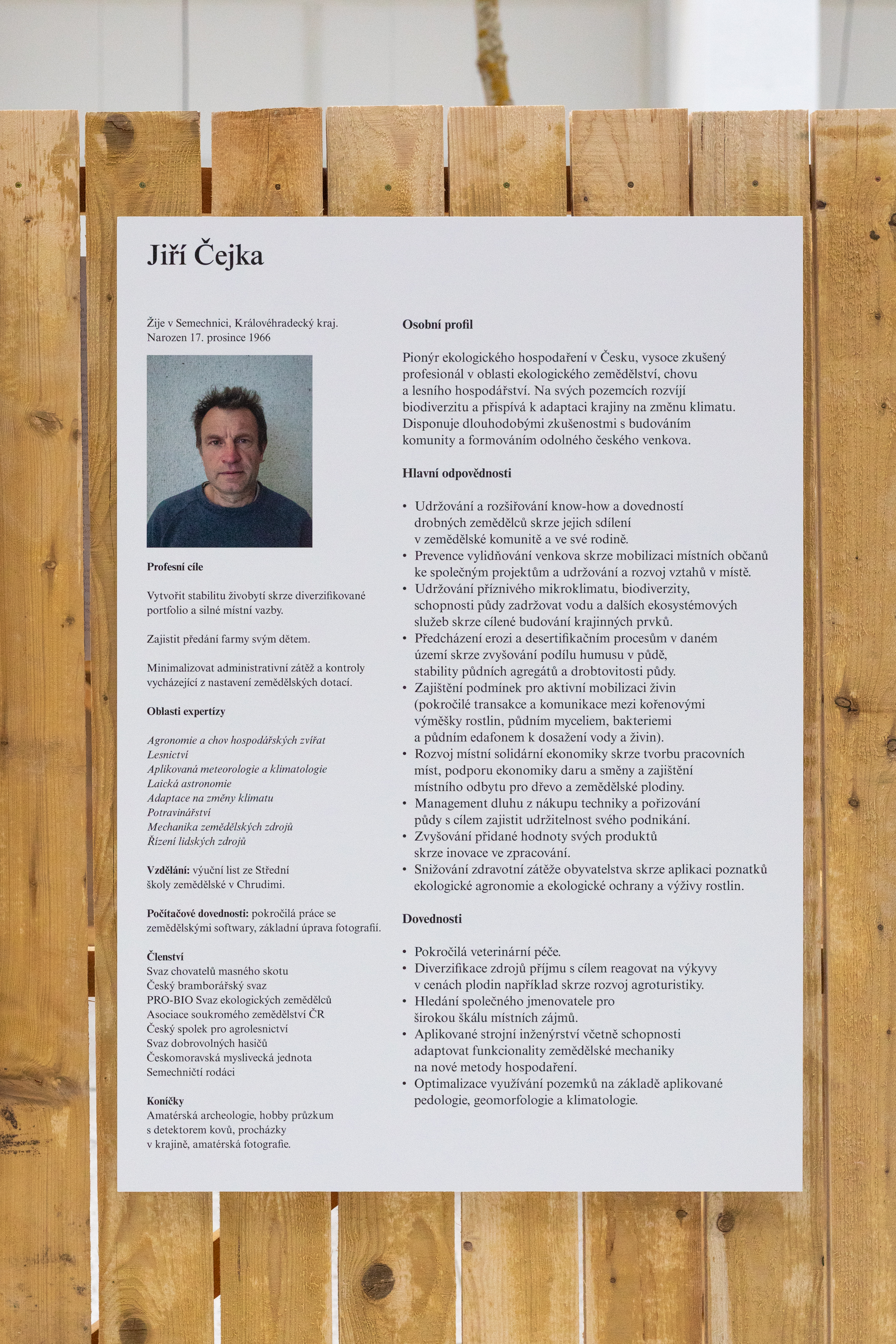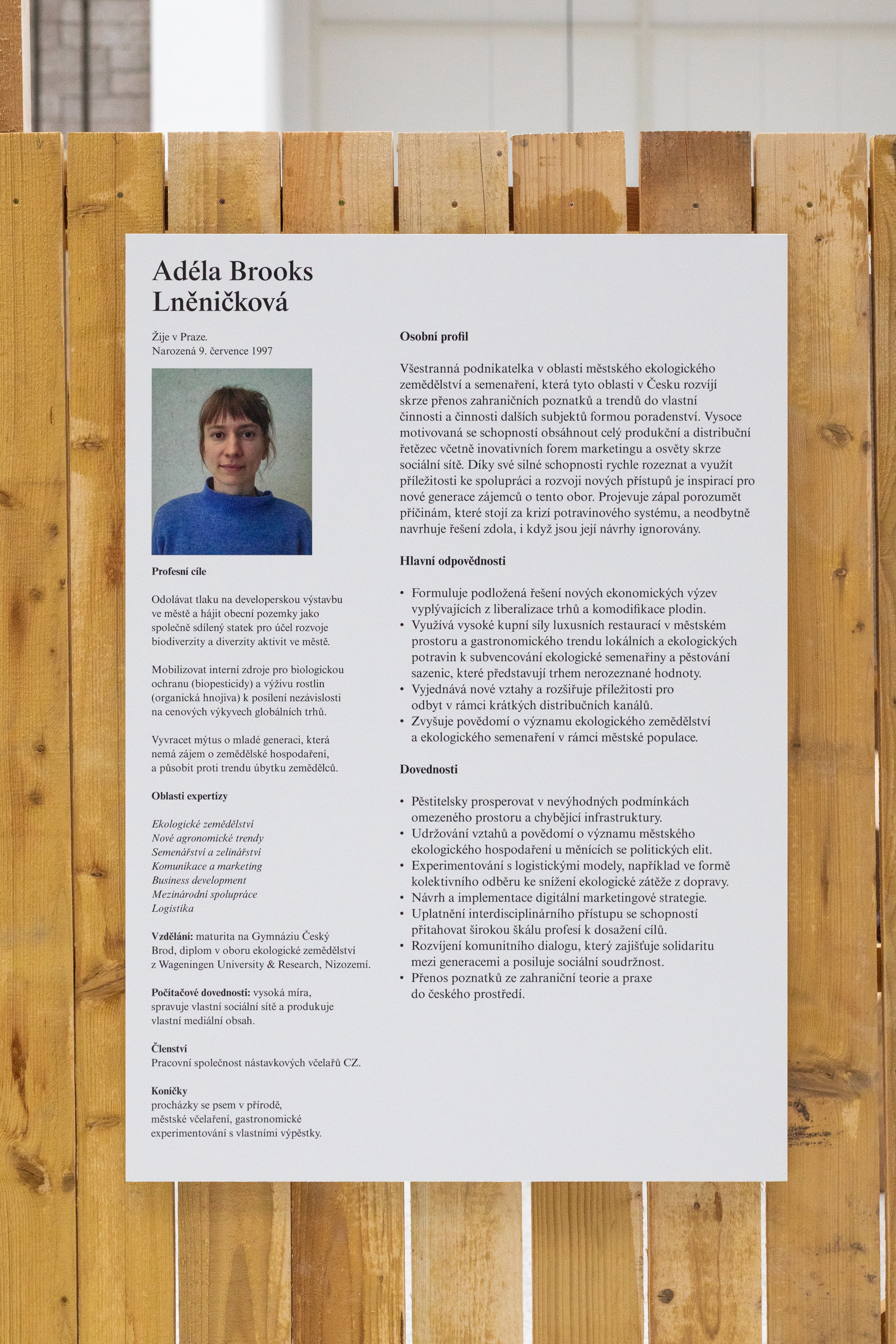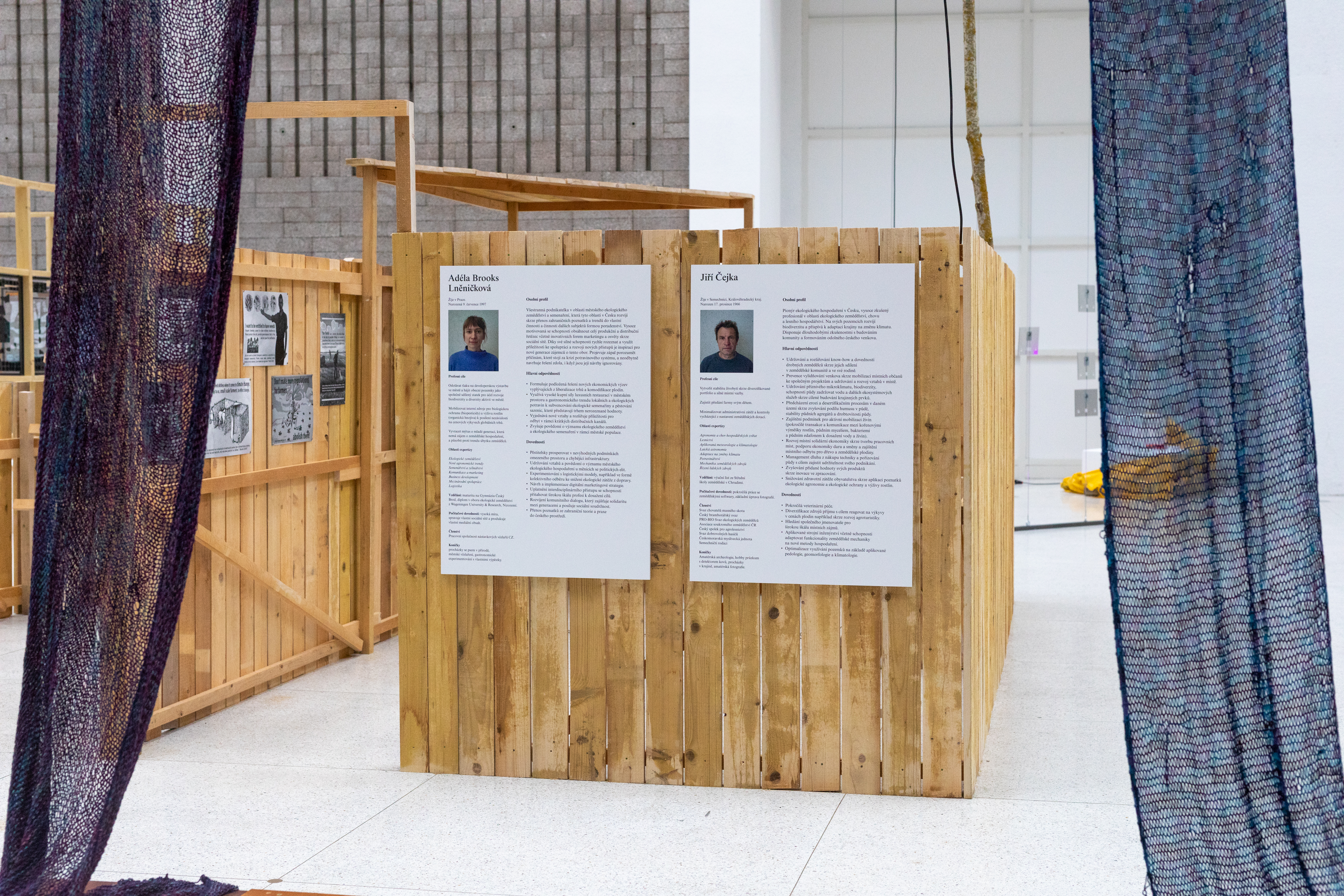Asunción Molinos Gordo
Work exhibited in the Trade Fair Palace:
El Fellah Ando Fes (The Peasant Has a Hoe) / 2013 / installation / 25 sheets of paper, hardcover notebook
Ghost Agriculture (Unlimited Resource Farming) / 2018 / textiles / hand stiche Kheimeya technique (2.5 × 2.5 m / 1.5 × 1.5 m / 1.5 × 1.5 m)
Peasant CV / 2015–ongoing / installation / texts / courtesy of the artist
El Fellah Ando Fes (The Peasant Has a Hoe), 2013, Biennale Matter of Art 2024, National Gallery Prague – Trade Fair Palace (c) Jonáš Verešpej
Ghost Agriculture (Unlimited Resource Farming), 2018, Biennale Matter of Art 2024, National Gallery Prague – Trade Fair Palace (c) Jonáš Verešpej
Peasant CV, 2015–ongoing, part of the installation of Tomáš Uhnák – The Spectre of Peasantry, 2024, Biennale Matter of Art 2024, National Gallery Prague – Trade Fair Palace (c) Jonáš Verešpej
Asunción Molinos Gordo (lives between Madrid and Cairo, b. Aranda de Duero, Burgos (Spain), 1979) is an artist and researcher, whose work focuses on today’s peasants. She sees small or medium farmers not only as producers of food, but also as makers of culture. They keep traditional knowledge alive and create new expertise. Asunción is interested in rural life to understand the value and complexity of its culture. Why is it so unseen and neglected? At Matter of Art, she shows two works that tell stories of rural change in the Middle East and North Africa.
She also collaborates with the Czech artist and researcher Tomáš Uhnák on his new project for the biennale. Together they create a local adaptation of her ongoing work Peasant CV, focusing on the situation of small farmers in the Czech Republic. El Fellah Ando Fes [The Peasant Has a Hoe] talks about how the work of peasants has changed in Jordan. Asunción found out that the small farmer is often used as an example in Arabic calligraphy and grammar exercises that children learn at school. However, these sentences describe how peasants worked in the past and make their situation look better than it really is. The peasant eats roast pigeon. So Asunción decided to create new exercises that show the problems farmers face today: Irrigation water gets privatized. The fertile soil starts to turn into desert. The peasant does not want his children to become farmers. The sentences are handwritten on lined paper resembling a school notebook. With this Asunción reminds us that there is still a lot we can learn about the situation of today’s farmers.
Ghost Agriculture borrows its title from an open-world video game, Tom Clancy’s Ghost Recon Wildlands. In open-world games players have the freedom to ignore the main goal and create their own story based on what they personally want to achieve and do in the game. As Asunción sees it, Egyptian agriculture is facing a similar problem where different interests and desires are not working together for the common good. She uses satellite images to compare two types of farming: small plots in the Nile delta farmed by 4 million Egyptian peasants (fellahins), and large circular fields in the desert run by private companies in collaboration with the government. The peasants use renewable Nile water to grow various crops and they are the ones who feed the people of Egypt. In contrast, the desert fields rely on non-renewable fossil water and need to be watered constantly. These desert crops are mainly exported for the benefit of private companies. Only a small portion is used for human consumption, most of it is sold as animal feed to Saudi Arabia.
Asunción creates a series of textiles to show the tensions between these two models of production. She works with the Egyptian technique of Khayamiya, which traditionally shows farming scenes, animals, crops, and Islamic geometrical shapes. In Asunción’s design, the geometrical shapes become pie diagrams or greedy Pac-Man figures. How many peasants’ fields fit into a circular desert plot? How much land do small farmers use and how much the big companies? How can fellahins resist under such pressure from industrial farming?
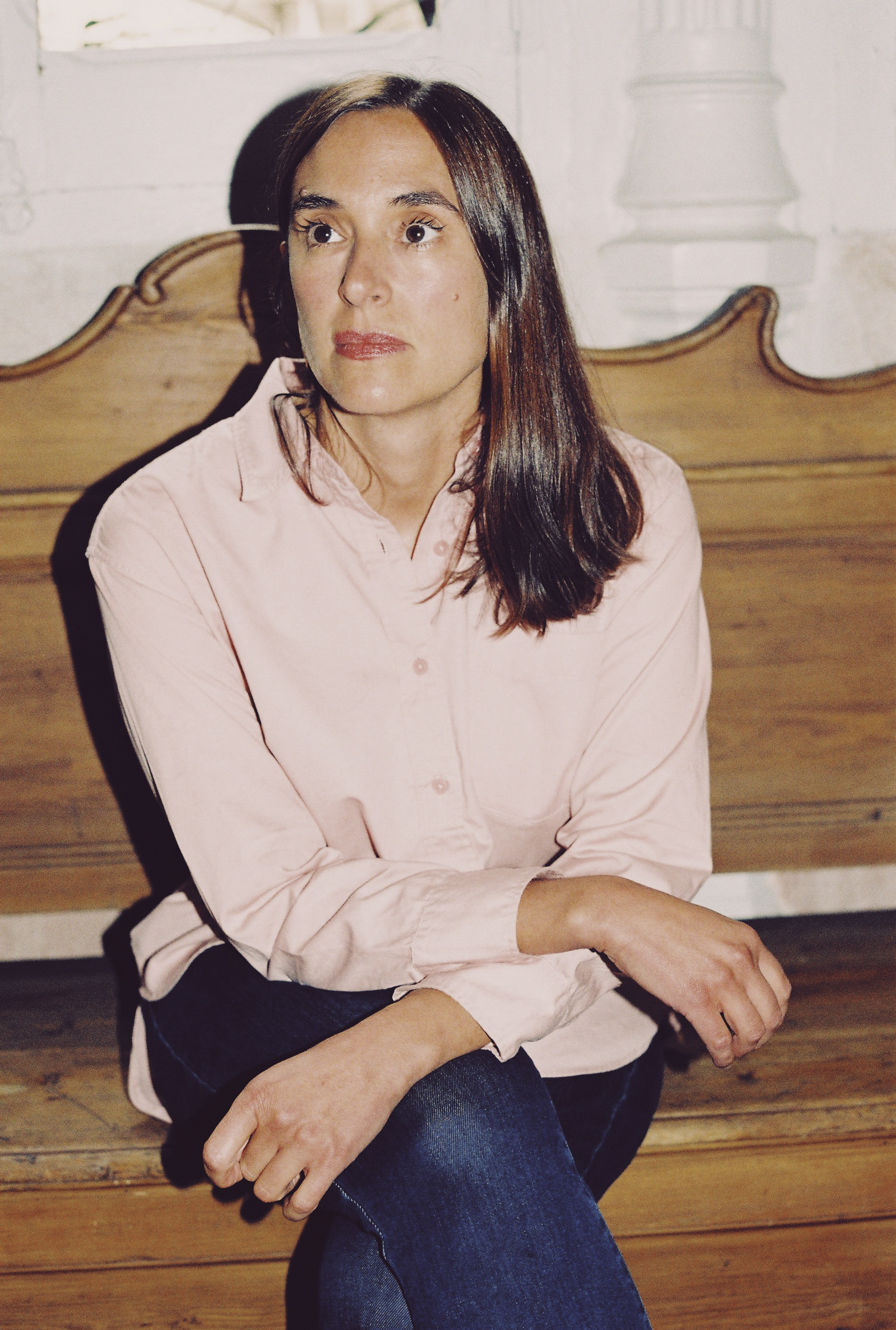
Asunción Molinos Gordo for Ángela Suárez (c) from the artist's archive
Asunción Molinos Gordo (b. 1979, Guzman, Burgos, Spain) is a researcher and visual artist. Her practice is strongly influenced by disciplines such as anthropology, sociology, and cultural studies. The main focus of her work is the contemporary peasantry. Her work questions the categories that define “innovation” in the current dominant discourse and explores different forms of intellectual domination, from the urban to the rural. She has produced projects reflecting on land use, nomadic architecture, peasant strikes, bureaucracy over territory, the transformation of rural labor, biotechnology, and the international food trade.
Molinos Gordo won the 2015 Sharjah Biennial Prize with her project WAM (World Agriculture Museum) and represented Spain at the 13th Havana Biennial in 2019. Her work has been exhibited at institutions around the world, including Jameel Arts Centre (Dubai, AE), IVAM (Valencia, ES), Victoria & Albert Museum (London, GB), Delfina Foundation (London, GB), ARNOLFINI (Bristol, GB), The Townhouse Gallery (Cairo, EG), Darat Al Funun (Amman, JO), tranzit (Prague, CZ), Cappadox Festival (Uçhisar, TR), The Finnish Museum of Photography (Helsinki, FI), Museo de Arte Carrillo Gil (Mexico City, MX), MAZ Museo de Arte de Zapopan (Guadalajara, MX), MUSAC (León, ES), CA2M (Madrid, ES), CAB (Burgos, ES), Matadero (Madrid, ES), and La Casa Encendida (Madrid, ES), among others.
Molinos Gordo obtained her BFA from the Universidad Complutense de Madrid, where she also completed a master’s in contemporary art theory and practice. She also earned a degree in anthropology and ethnography from the UNED in Madrid. Molinos Gordo is represented by Travesía Cuatro.
